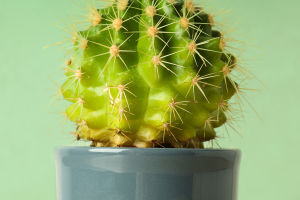Sansevieria is a popular household potted plant.
This perennial evergreen herb is not only aesthetically pleasing but also offers numerous benefits such as air purification. sansevieria are highly efficient in absorbing harmful gases, particularly formaldehyde, and effectively removing pollutants like sulfur dioxide, chlorine, ether, ethylene, and carbon monoxide from the air.
As a result, they are an excellent choice for indoor cultivation, as they can enhance the environment and promote cleaner air quality.
One of the notable characteristics of Sansevieria is its adaptability. They thrive in warm and moist environments but can also endure drought conditions. Additionally, they exhibit tolerance towards varying light levels, making them suitable for both well-lit areas and shadier spots within a home.
Moreover, sansevieria do not have strict soil requirements and can thrive in well-drained sandy soil.
Sansevieria belong to the Agave family and are classified as perennial herbaceous foliage plants. However, inadequate nutrient supply during their growth cycle can lead to certain issues. Insufficient nutrients may cause stunted growth in specific parts of the plant, resulting in a fading color of new leaves from vibrant green to yellow.
The overall growth of the plant slows down, and the older leaves may turn bronze or orange. In severe cases, the entire crown may fade, leading to stunted growth or even plant death. Another common problem affecting sansevieria is anthracnose and bacterial soft rot.
These diseases, caused by fungal infestation, significantly impact the plant's growth. Mild cases manifest as dry and decaying leaves, while severe instances can lead to the plant's demise.
To maintain healthy golden-sided sansevieria, watering must be adjusted according to specific conditions. Factors such as weather and the moisture level of the potting soil should be considered before determining watering frequency.
Overwatering should be avoided as it can cause root rot, damaging the plant's growth. During maintenance, it is advisable to keep the soil slightly dry to promote faster growth. In the peak growing seasons of spring and autumn, watering can be increased, while winter necessitates reduced watering.
In terms of sun exposure, golden-sided sansevieria thrive in full-time light during all seasons except for summer. The intense summer heat and sunlight can potentially burn the leaves, resulting in yellowing.
It is crucial to avoid placing the plant in excessively shady areas as it diminishes its ornamental value and can adversely affect overall growth.
For optimal growth, it is recommended to report golden-sided sansevieria annually. This practice ensures loose, fertile, and permeable soil, keeping the root system active and supporting vigorous growth.
When selecting soil, prioritize loose and permeable options, and consider adding river sand or cinder to increase pot permeability when using potting soil.
By understanding the specific requirements and care guidelines for sansevieria, enthusiasts can enjoy the beauty of these plants while harnessing their air-purifying properties.
With their adaptability and ability to thrive in indoor settings, sansevieria is an excellent choice for enhancing the aesthetic appeal and air quality of any household.


